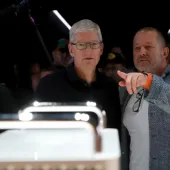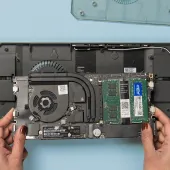The Evolution of MacBook: From the First Model to Today's Powerful Machines
In 2006, Steve Jobs, the co-founder and CEO of Apple, introduced the first MacBook to the world. At the time, the MacBook was a revolutionary product, as it was the first Apple laptop to use Intel processors instead of the PowerPC chips that were previously used. This change allowed Apple to offer faster and more powerful laptops to its customers, while also making it easier for developers to create software for Macs.
The first MacBook featured a 13-inch screen, a polycarbonate body, and a magnetic latch that held the lid closed. It also had a built-in iSight camera, which allowed users to video chat with friends and family. The MacBook was available in white or black, and it quickly became a popular choice among consumers.
In 2008, Apple introduced the MacBook Air, which was even thinner and lighter than the MacBook. The MacBook Air was a game-changer, as it was the first ultra-thin laptop that was also powerful enough to be used as a primary computer. The MacBook Air featured a 13-inch screen, a full-sized keyboard, and a solid-state drive (SSD), which made it faster and more reliable than traditional hard drives.
Over the years, Apple continued to improve the MacBook, introducing new features and technologies that made it even more powerful and versatile. In 2012, the company introduced the MacBook Pro with Retina display, which had a higher resolution screen than any other laptop at the time. The Retina display made images and text look incredibly sharp and clear, and it quickly became a favorite among graphic designers and video editors.
In 2015, Apple introduced the MacBook, which was the thinnest and lightest MacBook ever made. The MacBook featured a 12-inch screen, a fanless design, and a new keyboard that used a butterfly mechanism to provide a more stable and responsive typing experience. It also had a USB-C port, which allowed users to charge the laptop and connect to external devices with a single cable.
In 2016, Apple introduced the MacBook Pro with Touch Bar, which replaced the function keys with a customizable touch-sensitive strip that displayed different options depending on the application being used. The Touch Bar was designed to provide users with quick access to common tasks and tools, and it quickly became a favorite among creative professionals.
In 2020, Apple made another major change to the MacBook, introducing the M1 chip, which was designed specifically for Macs. The M1 chip offered faster performance, longer battery life, and improved graphics capabilities, making it the most powerful MacBook ever made. The M1 chip also allowed the MacBook to run iOS apps, which opened up a whole new world of possibilities for users.
Today, the MacBook lineup includes the MacBook Air, the MacBook Pro, and the MacBook Pro with Touch Bar. All three models feature Apple's powerful M1 chip, which offers lightning-fast performance and incredible battery life. They also come with macOS, Apple's operating system, which is designed to be intuitive and easy to use.
In conclusion, the MacBook has come a long way since its debut in 2006. Over the years, Apple has introduced new features and technologies that have made the MacBook more powerful, versatile, and user-friendly, and it has become an iconic symbol of Apple's commitment to innovation and design. From the first model to today's powerful machines, the MacBook has undergone numerous transformations that have helped to shape the landscape of the laptop industry. As we look towards the future, it's clear that the MacBook will continue to be a beloved and essential tool for creatives, professionals, and casual users alike. Whether you're a student, a designer, a developer, or a writer, there is a MacBook model that can meet your needs and exceed your expectations.



